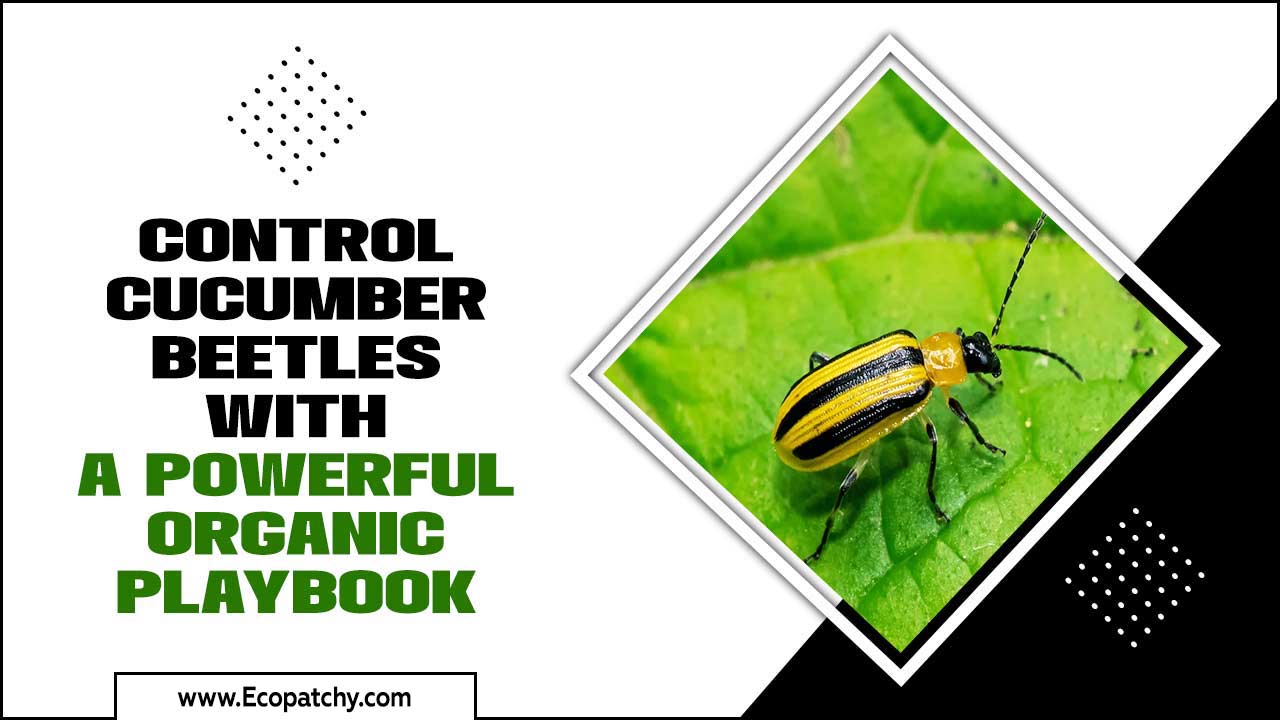Are you tired of squash bugs ruining your garden? These pesky insects can quickly destroy your squash and melon plants, leaving you with a disappointing harvest.
But don’t worry! There are several easy and organic methods to control squash bugs and protect your garden. Here, we will cover everything from identifying squash bugs and their damage to preventing infestations with companion planting and beneficial insects.
We will also discuss eliminating how to control squash bugs with these easy organic methods like handpicking, trapping, diatomaceous earth, neem oil, and insecticides. With these tips and tricks, you can say goodbye to squash bug infestations for good!

How To Control Squash Bugs With These Easy Organic Methods: Details Explore
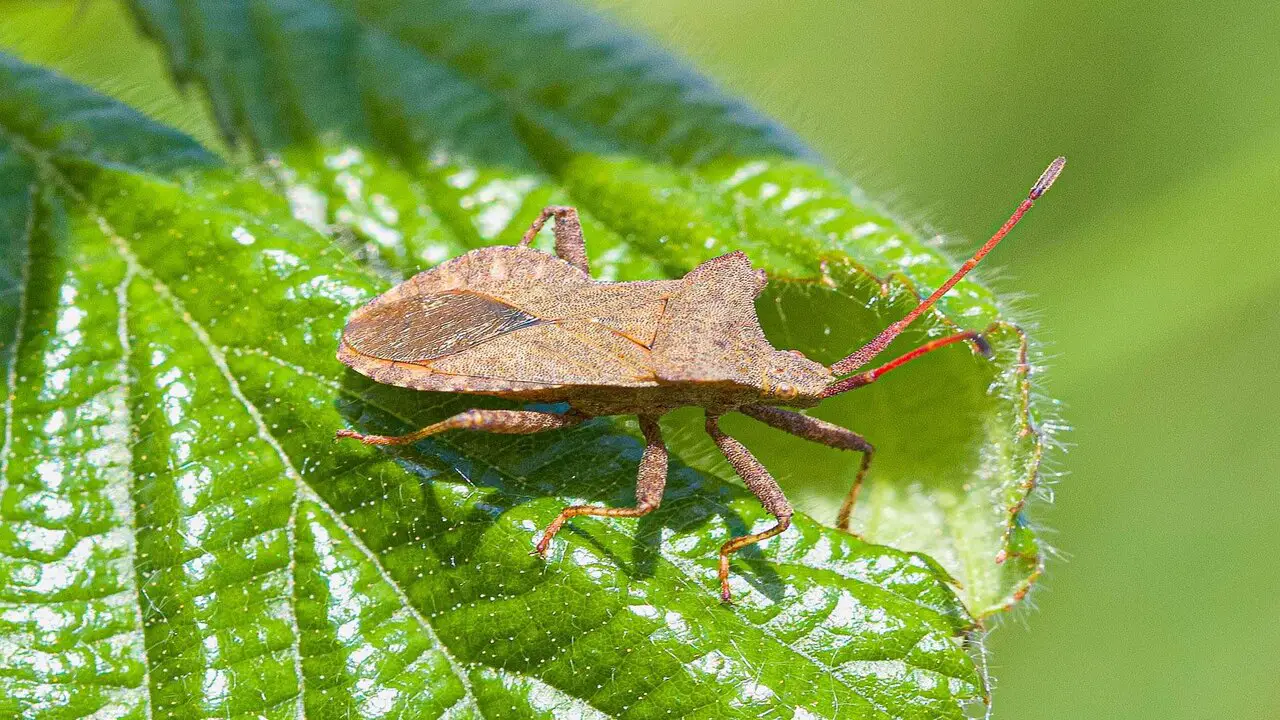
Controlling squash bugs can be challenging, but several easy organic methods can help keep these pesky insects at bay. One effective method is handpicking the bugs and their eggs off the plants and disposing them in soapy water. This can help reduce the population and prevent further damage to your squash plants. Another method is using row covers to block the bugs from accessing your plants. Row covers create a barrier that prevents the bugs from laying eggs on your plants, reducing the risk of infestation.
Additionally, interplanting your squash with companion plants such as marigolds or nasturtiums can help deter squash bugs, as the scent of these flowers repels them. Finally, maintaining a healthy garden ecosystem by providing adequate water and nutrients to your plants can help them withstand squash bug infestations. Using these easy organic methods, you can effectively control squash bugs and protect your precious squash plants.
What Is A Squash Bug?
A squash bug is a common pest that can wreak havoc on your squash plants if left unchecked. These insects are about 5/8 inch long and have a brownish or greyish colour. They have a shield-like shape and emit a strong odour when disturbed. Squash bugs feed on the leaves, stems, and fruit of squash plants, causing wilting, browning, and even death of the plant if infestations are severe. Identifying and controlling squash bugs early is important to prevent damage to your crop.
How To Identify Squash Bugs?
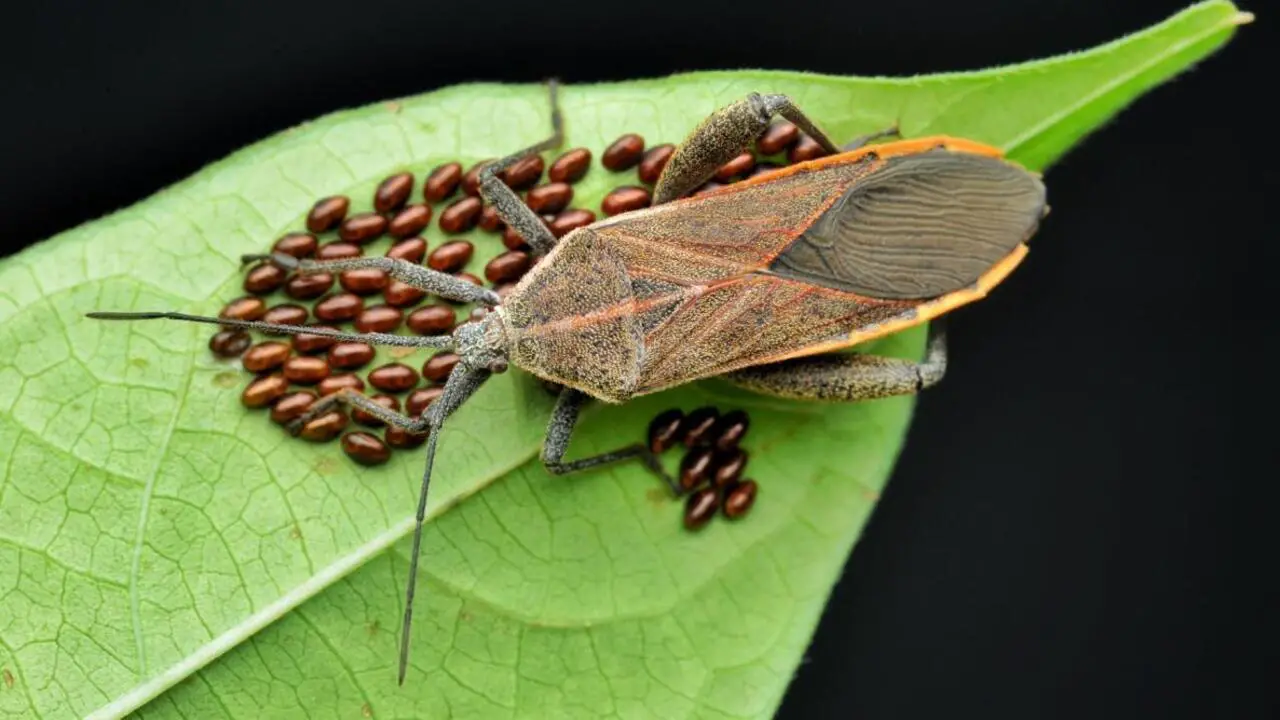
Identifying squash bugs is an important step in controlling them organically. Squash bugs are small, brownish insects with a flat, shield-shaped body. They can often be found on the undersides of leaves or in the crevices of the plant.
Adult squash bugs are about 5/8 inch long and have a distinctive triangular shape on their backs. They also have long antennae and piercing-sucking mouthparts. By familiarizing yourself with the appearance of squash bugs, you can quickly identify them and take appropriate measures to control their population and protect your squash plants from damage.
How To Identify Squash Bug Damage?
Identifying squash bug damage is important in controlling these pests using organic methods. Squash bugs can cause significant damage to your plants, so it’s essential to recognize the signs. Look for leaves that are wilting or turning brown, indicating feeding by squash bugs. You may also notice small, yellowish, bronze-colored eggs on the leaf’s underside or along your plants’ stems.
These eggs can hatch into nymphs, small, greenish-grey insects with flat bodies and sucking mouthparts. If you see these signs of squash bug damage, it’s time to take action to protect your plants and control the infestation using organic methods.
Life Cycle Of Squash Bug
The life cycle of squash bugs consists of several stages of development. These bugs go through a reproductive process and have a specific lifespan. The seasonal patterns play a role in their activity; they grow and mature over time. It’s interesting to note that squash bug nymphs are often found on the vines of plants, especially during the early summer months.
These bugs can cause damage to young plants, such as yellow spots on the leaves. Additionally, pollinators like bees are attracted to the flowers of squash plants. However, gardeners must be aware of squash bugs and take appropriate measures to control their population.
How To Prevent Squash Bugs
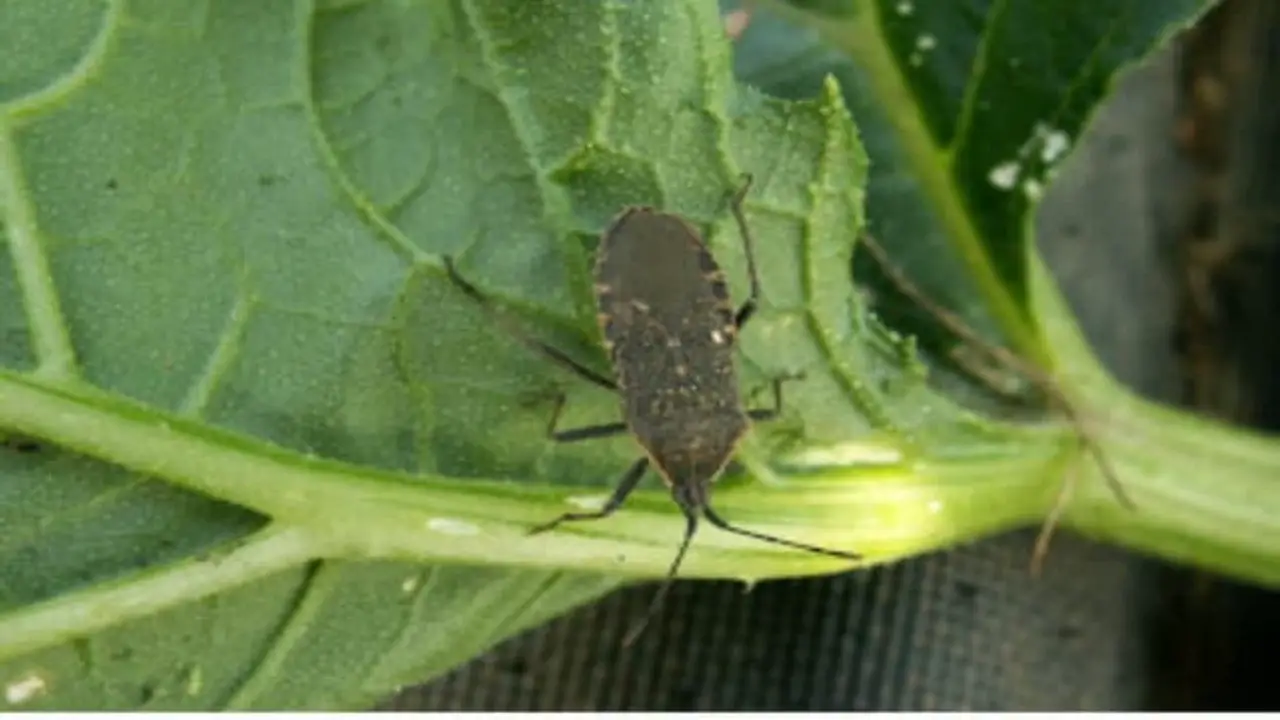
You can employ several effective strategies to prevent squash bug infestations in your garden. One preventive measure is to plant resistant varieties of squash, such as zucchini or butternut squash, which are less susceptible to squash bug damage.
Also, practising companion planting with dill or calendula can deter squash bugs from invading your garden. Trellising your squash and melons helps keep the plants off the ground, making reaching them more difficult for beetles. Another option is to use beneficial insects, such as tachinid flies, to control squash bug nymphs. These preventative practices can help maintain healthy squash plants throughout the growing season.
Plant Resistant Varieties
When controlling squash bugs in your vegetable garden, planting resistant varieties is an effective approach. By choosing squash varieties naturally resistant to squash bugs, you can reduce the risk of infestation and minimize damage to your plants.
Look for different squash cultivars that are known to be less susceptible to squash bug damage. Planting resistant varieties helps deter squash bugs and offers other benefits, such as improved yields and healthier plants. Select squash varieties that naturally repel bugs, keeping your garden thriving throughout the growing season.
Try Companion Planting
Explore the concept of companion planting to deter squash bugs. Discover the beneficial plant combinations that help repel squash bugs from your garden. Certain companion plants, such as dill and calendula, can effectively keep squash bugs at bay. By implementing companion planting strategies, you can protect your squash plants naturally.
Companion crops like zucchini and mint can also attract important pollinators to your garden. Consider planting these companions alongside your squash to create a mutually beneficial environment. Not only will this help deter squash bugs, but it will also enhance the overall health of your garden.
Trellis Your Squash and Melons
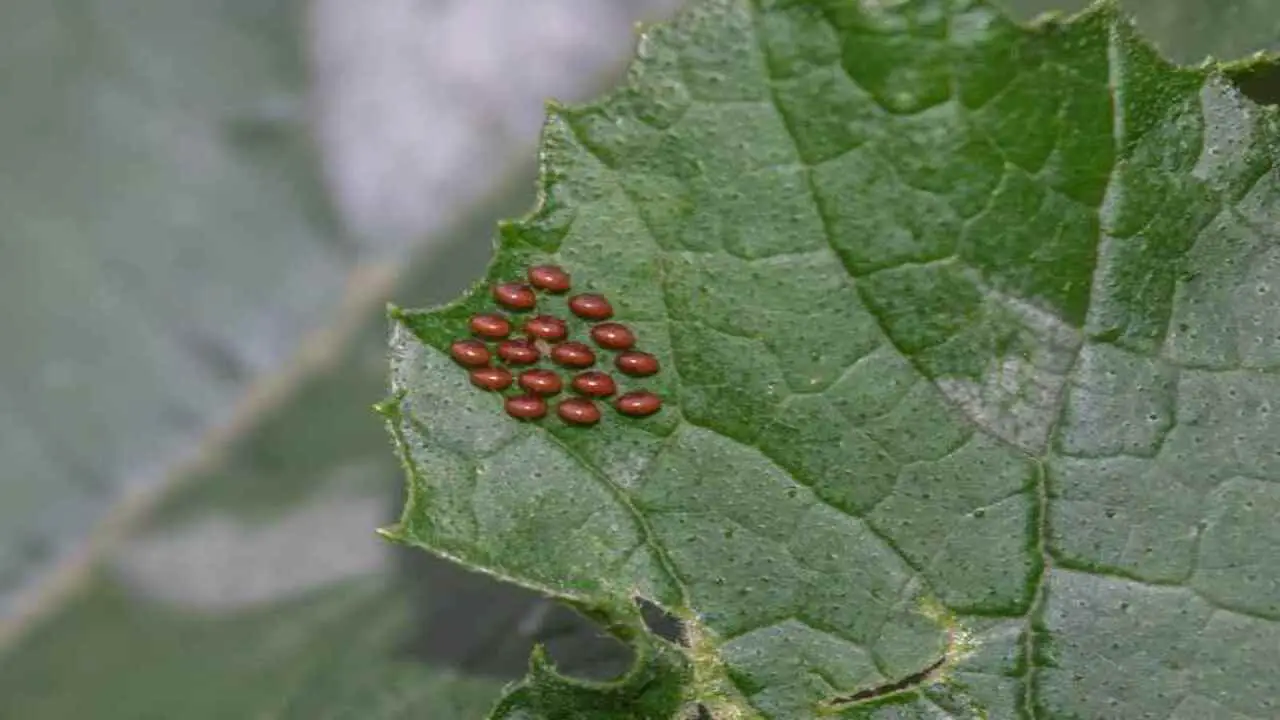
Learn how trellising your squash and melons can deter squash bugs. Discover the advantages of growing these plants on trellises, such as improved air circulation and reduced pest access. Implement trellising techniques like sturdy supports and tying vines to encourage upward growth.
Explore different trellis systems, such as A-frame or netting, to effectively support your squash and melon plants. By trellising, you’ll deter squash bug infestations, make harvesting easier, and maximize garden space. Gain insights into the benefits of vertical gardening for pest management and enjoy healthier, more productive squash and melon plants.
Use Beneficial Insects
Harness the power of beneficial insects to naturally control squash bugs. Explore the diverse array of natural predators that feed on these garden pests. By attracting beneficial insects to your garden, you can create a balanced ecosystem that keeps squash bugs in check.
Beneficial insects such as tachinid flies, and lady beetles are known to prey on squash bug nymphs and adults. You can attract these helpful insects by planting dill, calendula, and other flowering plants that provide nectar and pollen. Implementing strategies to promote the presence of beneficial insects will contribute to a healthy garden ecosystem in which squash bugs are less likely to thrive.
Keep an Eye Out for Squash Bug Eggs
Inspect the undersides of leaves for clusters of squash bug eggs. Look for bronze-colored eggs arranged in a V-shaped pattern. Remove and destroy any squash bug eggs you find to prevent infestations. Regularly check your plants for signs of squash bug activity, such as yellow spots or eggs.
Keeping your garden clean can help reduce the number of squash bug eggs laid. By diligently monitoring for squash bug eggs, you can effectively control their population and protect your zucchini, butternut squash, and other summer and winter squash varieties.
Use Row Covers
Consider using lightweight row covers to protect your squash plants from squash bugs. These covers create a physical barrier that prevents the bugs from reaching your plants. Be sure to secure the edges of the row covers to prevent any bugs from getting underneath.
Once your plants start to flower, removing the row covers is important to allow for pollination. Remember to regularly monitor your plants for any signs of squash bug activity. Using row covers can be an effective organic method to control squash bugs and keep your plants healthy throughout the growing season.
How To Get Rid Of Squash Bugs

To effectively control squash bugs, implementing organic methods is key. You can protect your squash plants from these pesky insects by following proper pest management techniques. There are several effective ways to eliminate squash bugs from your garden.
Take action early to prevent a widespread infestation. Some methods include handpicking and drowning squash bug nymphs, using boards as traps, applying diatomaceous earth, using neem oil, and utilizing insecticides. Remember to regularly monitor your plants for any signs of squash bug activity and take necessary steps to keep them at bay.
Handpick and Drown
To control squash bugs organically, one effective method is handpicking and drowning them. Check the undersides of leaves where these pests often hide and manually pick off adult squash bugs and nymphs from your plants. Drop them into a bucket of soapy water to drown them.
By regularly handpicking squash bugs and disposing of them away from your garden, you can prevent re-infestation and keep their population under control. This simple yet effective method, combined with other organic techniques, can help protect your zucchini, butternut squash, and other winter squash varieties from these pesky beetles.
Use Boards as Traps
To control squash bugs organically, you can use boards as traps. Place wooden boards near your squash plants, and during the night, the squash bugs will gather underneath them. In the morning, lift the boards and squash the gathered bugs.
This process can be repeated daily to help reduce the squash bug population in your garden. Combining board traps with other control methods can lead to more effective results. By implementing this technique, you can naturally manage squash bugs without harsh chemicals or pesticides.
Try Diatomaceous Earth
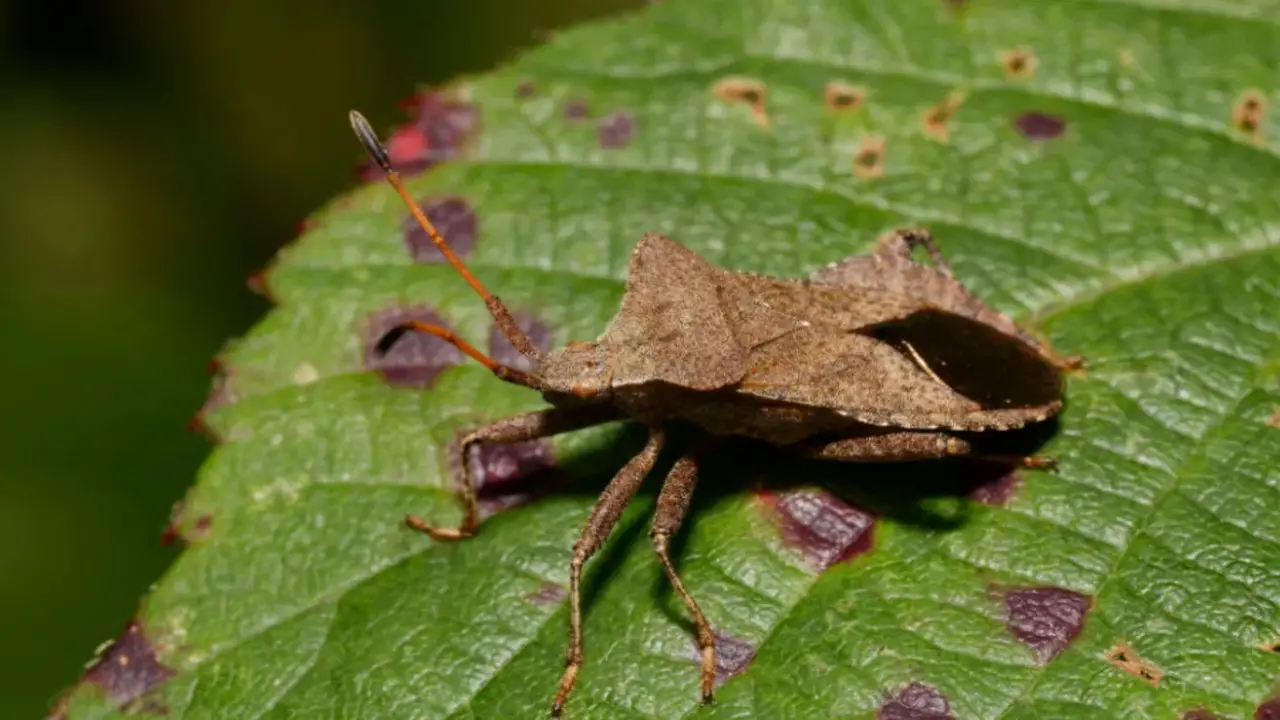
Applying food-grade diatomaceous earth around your squash plants can effectively control squash bugs. This fine powder damages the exoskeleton of the bugs, dehydrating and killing them. Be sure to reapply the diatomaceous earth after rainfall or irrigation for continued effectiveness.
However, use caution when handling diatomaceous earth as it can irritate the lungs and eyes. With its organic nature, diatomaceous earth is an excellent method for controlling squash bugs without harming pollinators or other garden-friendly insects. Give it a try and protect your squash plants from the devastating effects of these pests.
Apply Neem Oil
Spray neem oil on your squash plants to deter and kill squash bugs. Neem oil disrupts the feeding and reproductive processes of these pests. Ensure thorough coverage by applying the oil to both sides of the leaves. Repeat the application every 7-10 days to maintain effectiveness. Neem oil is a natural and eco-friendly option for controlling squash bugs. It is a great addition to your organic pest control arsenal.
Use an Insecticide
Consider utilizing an organic insecticide specially designed to combat squash bugs. When using an insecticide, it is important to carefully follow the instructions on the label for optimal effectiveness. For the best results, apply the insecticide during the early morning or late evening, when squash bugs are most active.
However, it is crucial to exercise caution when using insecticides, as they may unintentionally harm beneficial insects in your garden. Using insecticides only as a last resort is advisable after other control methods have proven unsuccessful.
Try Rototilling
One effective method to control squash bugs is by trying rototilling. By rototilling your garden beds in the fall, you can disturb and expose squash bug overwintering sites, disrupting their life cycle and reducing their population. Before tilling, remove any plant debris from the garden bed.
Additionally, consider practising crop rotation to minimize squash bug infestation. Rototilling, combined with other control methods, can effectively manage squash bugs and protect your zucchini, butternut squash, and other summer and winter squash varieties.
Conclusion
Controlling squash bugs organically is effective and safe for your plants and the environment. You can reduce the risk of squash bug infestation by implementing preventative measures such as planting resistant varieties, practising companion planting, and using beneficial insects.
Additionally, methods like handpicking and drowning, using boards as traps, applying diatomaceous earth, and using organic insecticides like neem oil can help eliminate squash bugs from your garden.
Remember to check for squash bug eggs and signs of damage regularly. With these easy organic methods, you can protect your squash plants and enjoy a bountiful harvest. We hope you understand how to control squash bugs with these easy organic methods.
Frequently Asked Questions
1.How Do You Get Rid Of Squash Bugs Organically?
Ans: To get rid of squash bugs organically, you can try companion planting with marigolds or nasturtiums near your squash plants. Handpick the bugs and their eggs off the leaves and stems. Repel them by spraying water, dish soap, and cayenne pepper. Rotate your crops yearly to avoid creating a breeding ground.
2.How Do You Make Homemade Squash Bug Killer?
Ans: To make homemade squash bug killer, you can try different methods. One option is to mix dish soap and water in a spray bottle. Another method is to use neem oil mixed with water according to the package instructions. You can also create a garlic spray by blending garlic cloves with water and straining it before spraying on plants.
3.How Do I Permanently Get Rid Of Squash Bugs?
Ans: Removing squash bugs can be challenging, but there are effective methods. Regularly handpick and remove the bugs and their eggs. Utilize organic insecticides like neem oil or pyrethrin. Plant companion crops like marigolds or use row covers to prevent infestations.
4.How Do You Plan A Garden Plot?
Ans: To plan a garden plot, start by choosing its location based on factors like sunlight, soil type, and access to water. Consider the available space and your gardening goals to determine the size and shape of the plot. Finally, decide on the vegetables or plants you want to grow and their arrangement.
5.What Do Squash Bugs Eat?
Ans: Squash bugs are known to feast on the leaves, stems, and fruits of squash plants and other related crops like melons, cucumbers, and pumpkins. Using their piercing-sucking mouthparts to extract sap from the plant can cause wilting, stunting, and reduced yield in severe infestations.

